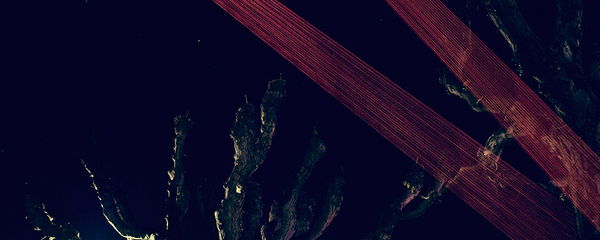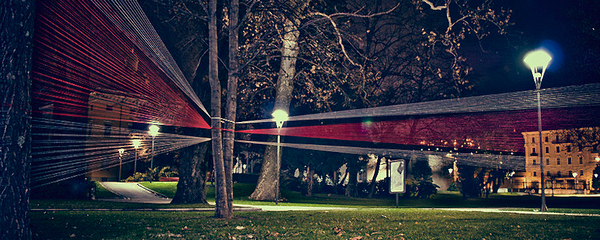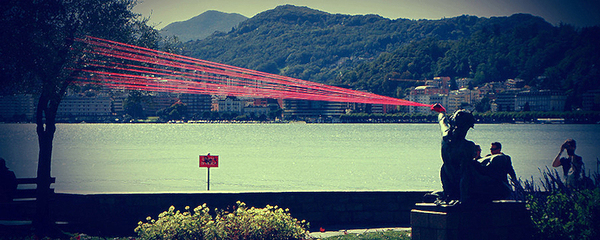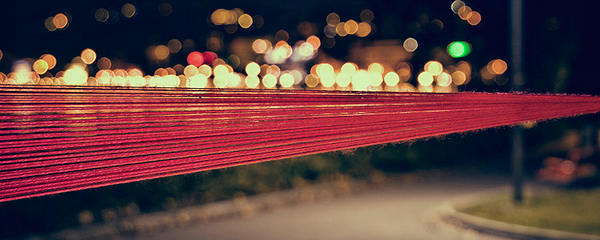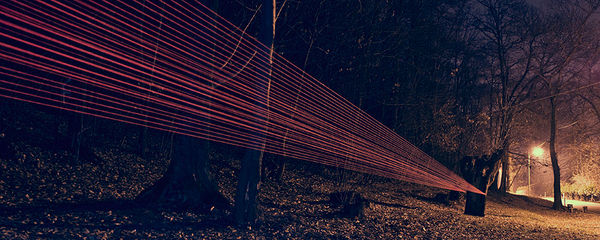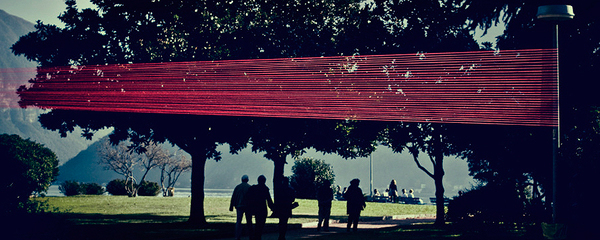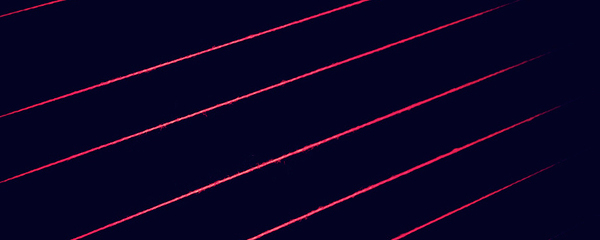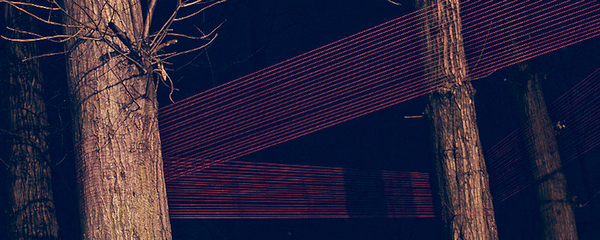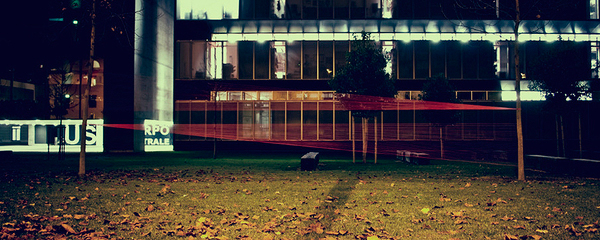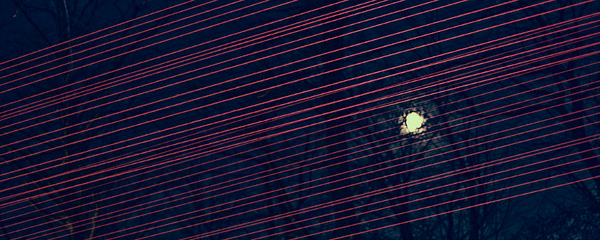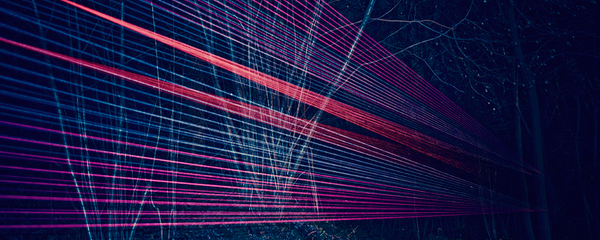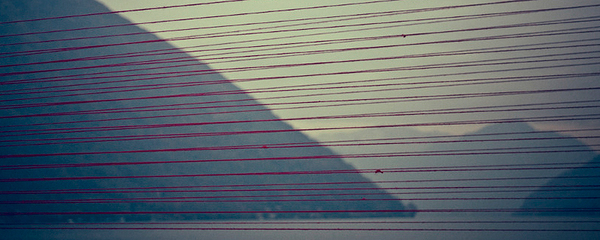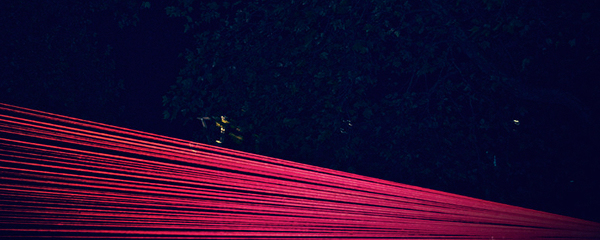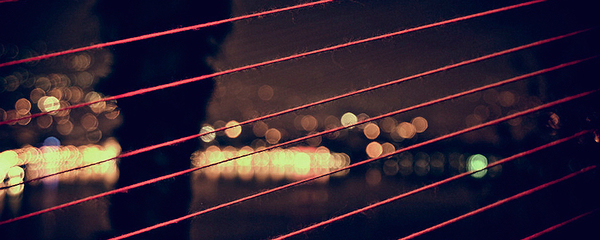Filrouge - Temporary Lines
Photography (October 2009 - June 2010)
Photography (October 2009 - June 2010)
NOT ONLY THREAD
Thread lines to highlight the passing of time and to revaluate the bond between man and nature.
These are the foundations of the “Filrouge - Temporary Lines” project.
The frenetic life of our society pushes us to see time as an unbeatable enemy that, day by day, hour after hour, follows us like a shadow and creeps up on us forcing us to sometimes make uncomfortable decisions.
These pieces of art besides giving a touch of color to the urban environment they are real testimonies of how time goes by so quickly, mostly for how their life depends on our intervention. For it is us who determines it's keeping or it’s loss.
Each of us in front of the “unexpected” reacts in different ways, based on our experiences and culture. Other then defining the flowing of time, this piece of work is used to emphasize different behaviors of man.
The public becomes part of the piece of work because of the total liberty to interact with it: observing, changing, and eventually destroying it. Human interaction is what alternates the present establishing it as the past.
Try to imagine every piece of thread as a human life, animal or plant. Every single line that is broken will become a disturbing element in the global context, an element to be thrown out, because useless or even harmful. The public determines the duration of the piece of art, and it does not matter if it lasts a day, a month or a year, the important thing is to understand that our behavior has certain consequences on us and on what surrounds us.
We need to realize that we can continue to destroy what we have of beautiful, but sooner or later we’ll be left with only rubbish.
------------------------------------------------------------------------------------------------------------------------------------------
NON SONO SOLO FILI
Fili per evidenziare lo scorrere del tempo e per rivalutare il rapporto uomo-natura.
Questi i perni portanti del progetto “Filrouge - Temporary Lines”.
I ritmi frenetici della nostra società ci spingono sempre più a vedere il tempo come un nemico imbattibile che, giorno dopo giorno, ora dopo ora, ci segue come un’ombra e nel contempo ci precede obbligandoci a prendere decisioni talvolta scomode.
Questi lavori, oltre a dare un tocco di colore all’ambiente urbano, sono dei veri e propri testimoni dello scorrere del tempo in quanto la loro durata di vita dipende esclusivamente dall’intervento del pubblico che ne determina il mantenimento o il decadimento.
Ognuno di noi, di fronte a qualcosa di “inaspettato”, reagisce diversamente in base alla propria esperienza di vita e alla propria cultura. L’opera, oltre a definire lo scorrere del tempo, serve dunque a sottolineare le profonde differenze comportamentali che ci sono tra ogni essere umano. Il pubblico diventa parte dell’opera stessa in quanto ha la totale libertà di interagire con essa: osservandola, modificandola ed eventualmente distruggendola.
L’interazione fisica tra osservatore e opera è essenziale per mettere in luce lo scorrere del tempo, il quale viene mediato per mezzo dell’agire del pubblico. L’azione umana modifica perciò il presente determinando così il passato.
Provate ad immaginare ogni singolo filo di lana come una vita umana, animale o vegetale.
Ogni singola retta che verrà spezzata diventerà un elemento scomodo nel contesto globale, un elemento da buttare perché inutile o addirittura dannoso. Il pubblico decide la durata di vita del lavoro e non importa che essa sia di un giorno, di un mese o di un anno l’importante è comprendere che ogni nostro atteggiamento ha delle conseguenze su di noi e su ciò che ci circonda. Bisogna rendersi conto che possiamo continuare a distruggere ciò che di bello abbiamo ma che prima o poi non ci rimmarrà nient’altro che roba da buttare.
Thread lines to highlight the passing of time and to revaluate the bond between man and nature.
These are the foundations of the “Filrouge - Temporary Lines” project.
The frenetic life of our society pushes us to see time as an unbeatable enemy that, day by day, hour after hour, follows us like a shadow and creeps up on us forcing us to sometimes make uncomfortable decisions.
These pieces of art besides giving a touch of color to the urban environment they are real testimonies of how time goes by so quickly, mostly for how their life depends on our intervention. For it is us who determines it's keeping or it’s loss.
Each of us in front of the “unexpected” reacts in different ways, based on our experiences and culture. Other then defining the flowing of time, this piece of work is used to emphasize different behaviors of man.
The public becomes part of the piece of work because of the total liberty to interact with it: observing, changing, and eventually destroying it. Human interaction is what alternates the present establishing it as the past.
Try to imagine every piece of thread as a human life, animal or plant. Every single line that is broken will become a disturbing element in the global context, an element to be thrown out, because useless or even harmful. The public determines the duration of the piece of art, and it does not matter if it lasts a day, a month or a year, the important thing is to understand that our behavior has certain consequences on us and on what surrounds us.
We need to realize that we can continue to destroy what we have of beautiful, but sooner or later we’ll be left with only rubbish.
------------------------------------------------------------------------------------------------------------------------------------------
NON SONO SOLO FILI
Fili per evidenziare lo scorrere del tempo e per rivalutare il rapporto uomo-natura.
Questi i perni portanti del progetto “Filrouge - Temporary Lines”.
I ritmi frenetici della nostra società ci spingono sempre più a vedere il tempo come un nemico imbattibile che, giorno dopo giorno, ora dopo ora, ci segue come un’ombra e nel contempo ci precede obbligandoci a prendere decisioni talvolta scomode.
Questi lavori, oltre a dare un tocco di colore all’ambiente urbano, sono dei veri e propri testimoni dello scorrere del tempo in quanto la loro durata di vita dipende esclusivamente dall’intervento del pubblico che ne determina il mantenimento o il decadimento.
Ognuno di noi, di fronte a qualcosa di “inaspettato”, reagisce diversamente in base alla propria esperienza di vita e alla propria cultura. L’opera, oltre a definire lo scorrere del tempo, serve dunque a sottolineare le profonde differenze comportamentali che ci sono tra ogni essere umano. Il pubblico diventa parte dell’opera stessa in quanto ha la totale libertà di interagire con essa: osservandola, modificandola ed eventualmente distruggendola.
L’interazione fisica tra osservatore e opera è essenziale per mettere in luce lo scorrere del tempo, il quale viene mediato per mezzo dell’agire del pubblico. L’azione umana modifica perciò il presente determinando così il passato.
Provate ad immaginare ogni singolo filo di lana come una vita umana, animale o vegetale.
Ogni singola retta che verrà spezzata diventerà un elemento scomodo nel contesto globale, un elemento da buttare perché inutile o addirittura dannoso. Il pubblico decide la durata di vita del lavoro e non importa che essa sia di un giorno, di un mese o di un anno l’importante è comprendere che ogni nostro atteggiamento ha delle conseguenze su di noi e su ciò che ci circonda. Bisogna rendersi conto che possiamo continuare a distruggere ciò che di bello abbiamo ma che prima o poi non ci rimmarrà nient’altro che roba da buttare.


